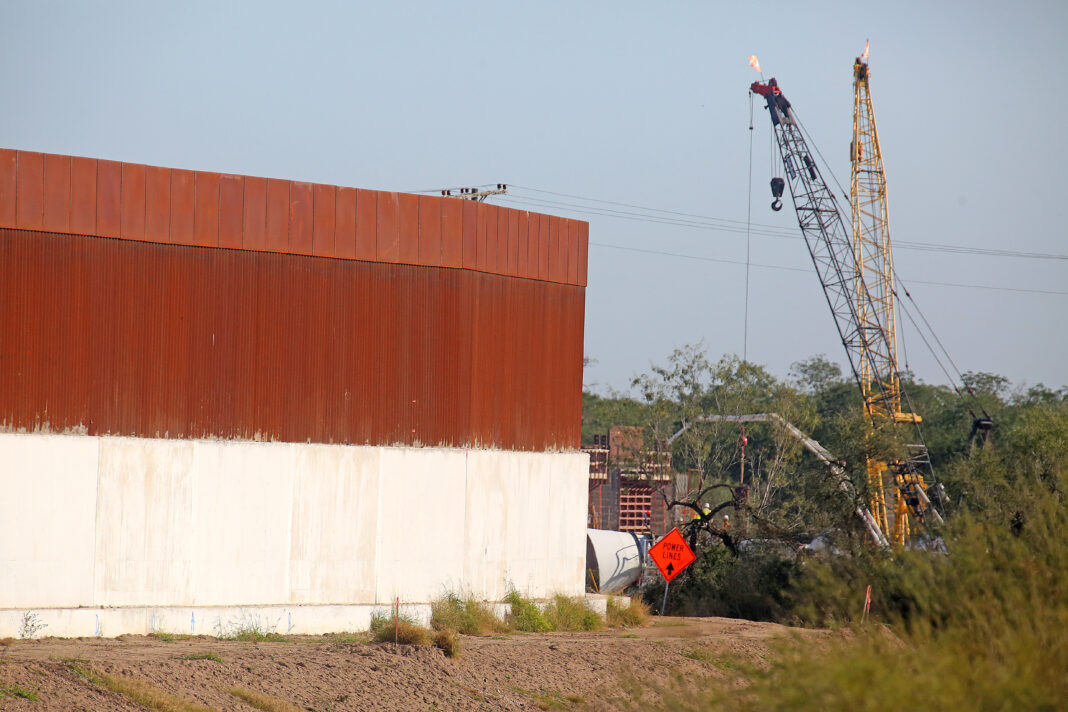Despite President Joe Biden’s executive order halting the construction of border wall construction and recent representations by the government in federal court that no new border wall will go up on untouched land, U.S. Customs and Border Protection is planning for 86 proposed new miles of the barrier.
CBP announced Thursday that it will be conducting environmental planning concerning this proposed construction, which, according to maps release by the agency, would nearly wall off the entire Rio Grande Valley.
“The development of the (environmental assessment) will not involve any construction of new border barrier or permanent land acquisition,” CBP said in a letter.
That document seeks input on potential environmental impacts and project alternatives for the “proposed construction, operation, and maintenance of border barrier and related system elements in the United States Border Patrol (USBP) Rio Grande Valley Sector in Starr, Cameron, and Hidalgo counties.”
It also confirms the suspicions of local environmentalists who have long doubted that Border Patrol would stop building wall, as they have documented wall continuing to go up in areas of Hidalgo County for months, which CBP has described as levee repair.
In the letter, CBP references congressional appropriations in fiscal years 2018 and 2019 for the construction of border wall, which Biden has requested Congress permanently cancel.
“While the funds remain appropriated, and consistent with DHS Border Wall Plan Pursuant to Presidential Proclamation 10142 (June 11, 2021), CBP is conducting environmental planning concerning the proposed construction,” the letter stated.
That proclamation concerns the termination of the border emergency and the redirection of funds diverted to border wall construction and directs “a pause” in the construction and on the obligation of funds for the project, allowing the Department of Homeland Security and the Department of Defense to assess the legality of the funding and contracting methods used for construction.
It also directs those agencies to assess the administrative and contractual consequences of ceasing wall construction and redirecting those funds and repurposing the contracts as appropriate and consistent with applicable law.
“DHS has, without deobligating funds, suspended performance of all border barrier contracts and southwest border barrier construction activities, with the exception of activities related to ensuring project sites are safe and secure in accordance with the terms and conditions of the contracts,” the proclamation stated.
However, there are exceptions, including 13.4 miles of “compromised levee” in the Rio Grande Valley where “DHS will construct and/or remediate” levee.
The proclamation also states that DHS planned to engage in environmental planning as consistent with the National Environmental Police Act, or NEPA.
“In order to facilitate the NEPA process, DHS will seek Rights of Entry from landowners to allow temporary access to perform environmental, cultural, and other survey work,” the proclamation stated.
DHS stated that it would use the remaining border wall construction funds to plan for the next highest priority barrier segments identified by DHS, which apparently includes the 86 miles of proposed border barrier that was essentially wall off the southern portion of the Valley.
Documents for the proposed planning state that the design of the wall would include 30-foot high, 6-inch square steel bollards that are spaced 4 inches apart and include a 5-foot anti-climb plate.
The proposal includes an up to 150-foot wide enforcement zone and an up to 50-foot wide maintenance road which would include the clearing of vegetation, which environmentalists here have long complained about in existing projects arguing this is detrimental to the Rio Grande Valley’s diverse ecosystem.
CBP also proposes lighting in the enforcement zone; the construction of remote surveillance towers, gates in the barrier; cameras attached to light poles; shelters to house equipment for cameras; and creating a concrete levee built into the face of the existing earthen levee.
Lastly, the proposal includes erosion control and drainage and the construction of access roads.
“Construction of the proposed new border barrier system would be expected to take up to five years,” the proposal stated. “Maintenance to the proposed border barrier system would be expected upon completion of construction.”
CBP says it is seeking input and comments on this action.
“The most helpful comments are those that include data or information that could help inform CBP’s analysis of potential impacts,” CBP said in a news release.
The agency is accepting comments until March 7, which can be submitted by email to [email protected]. Emails should reference “Rio Grande Valley Environmental Planning” in the subject line.
People can also call (800) 514-4781 or mail comments to the agency’s headquarters at 1300 Pennsylvania Ave. 6.5E Mail Stop 1039, Washington, D.C., 20229-1100.
CBP is also hosting two webinars at noon and at 6 p.m on Feb. 8.
To register, visit CBP.gov.




